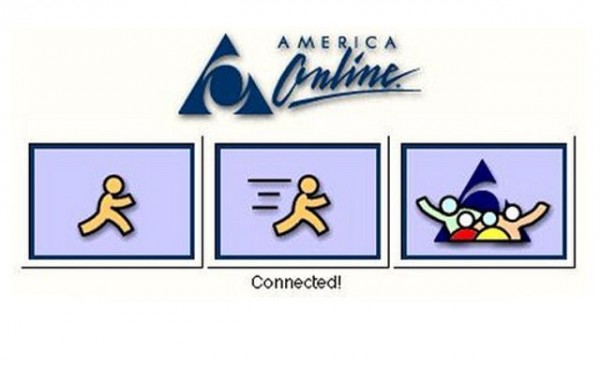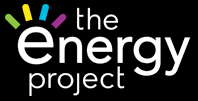 I made that recommendation for a few reasons - they had nationwide coverage (I had a local ISP with a local number), it was easy to install and for the most part it was the internet on training wheels. Sure, you could get out on the big bad web, but for the most part sticking close to your AOL home base you could send email and visit the AOL sites (keyword anyone?)
While I am happy to see more people comfortable with posting, viewing and participating on Facebook these days I can't help but wonder - is Facebook the new AOL? Will it get huge while trying to contain the whole internet experience in one place and then blow-up massively, maybe linger in some form or format. Perhaps a final Jeopardy question in 10 years? Or will the team find a way to stay relevant and pivot/turn/twist/re-shape itself over the next few years? Only time will tell my friends, but I am definitely keenly interested.
I made that recommendation for a few reasons - they had nationwide coverage (I had a local ISP with a local number), it was easy to install and for the most part it was the internet on training wheels. Sure, you could get out on the big bad web, but for the most part sticking close to your AOL home base you could send email and visit the AOL sites (keyword anyone?)
While I am happy to see more people comfortable with posting, viewing and participating on Facebook these days I can't help but wonder - is Facebook the new AOL? Will it get huge while trying to contain the whole internet experience in one place and then blow-up massively, maybe linger in some form or format. Perhaps a final Jeopardy question in 10 years? Or will the team find a way to stay relevant and pivot/turn/twist/re-shape itself over the next few years? Only time will tell my friends, but I am definitely keenly interested.
Is Facebook the New AOL?
I remember a conversation with my mom in the mid-90's about wanting to get "on the internet". She had been listening to stories from me about my work at an early web design agency and decided she was going to take the plunge. Not wanting to play tech-support all day I quickly recommended AOL.
 I made that recommendation for a few reasons - they had nationwide coverage (I had a local ISP with a local number), it was easy to install and for the most part it was the internet on training wheels. Sure, you could get out on the big bad web, but for the most part sticking close to your AOL home base you could send email and visit the AOL sites (keyword anyone?)
While I am happy to see more people comfortable with posting, viewing and participating on Facebook these days I can't help but wonder - is Facebook the new AOL? Will it get huge while trying to contain the whole internet experience in one place and then blow-up massively, maybe linger in some form or format. Perhaps a final Jeopardy question in 10 years? Or will the team find a way to stay relevant and pivot/turn/twist/re-shape itself over the next few years? Only time will tell my friends, but I am definitely keenly interested.
I made that recommendation for a few reasons - they had nationwide coverage (I had a local ISP with a local number), it was easy to install and for the most part it was the internet on training wheels. Sure, you could get out on the big bad web, but for the most part sticking close to your AOL home base you could send email and visit the AOL sites (keyword anyone?)
While I am happy to see more people comfortable with posting, viewing and participating on Facebook these days I can't help but wonder - is Facebook the new AOL? Will it get huge while trying to contain the whole internet experience in one place and then blow-up massively, maybe linger in some form or format. Perhaps a final Jeopardy question in 10 years? Or will the team find a way to stay relevant and pivot/turn/twist/re-shape itself over the next few years? Only time will tell my friends, but I am definitely keenly interested.
 I made that recommendation for a few reasons - they had nationwide coverage (I had a local ISP with a local number), it was easy to install and for the most part it was the internet on training wheels. Sure, you could get out on the big bad web, but for the most part sticking close to your AOL home base you could send email and visit the AOL sites (keyword anyone?)
While I am happy to see more people comfortable with posting, viewing and participating on Facebook these days I can't help but wonder - is Facebook the new AOL? Will it get huge while trying to contain the whole internet experience in one place and then blow-up massively, maybe linger in some form or format. Perhaps a final Jeopardy question in 10 years? Or will the team find a way to stay relevant and pivot/turn/twist/re-shape itself over the next few years? Only time will tell my friends, but I am definitely keenly interested.
I made that recommendation for a few reasons - they had nationwide coverage (I had a local ISP with a local number), it was easy to install and for the most part it was the internet on training wheels. Sure, you could get out on the big bad web, but for the most part sticking close to your AOL home base you could send email and visit the AOL sites (keyword anyone?)
While I am happy to see more people comfortable with posting, viewing and participating on Facebook these days I can't help but wonder - is Facebook the new AOL? Will it get huge while trying to contain the whole internet experience in one place and then blow-up massively, maybe linger in some form or format. Perhaps a final Jeopardy question in 10 years? Or will the team find a way to stay relevant and pivot/turn/twist/re-shape itself over the next few years? Only time will tell my friends, but I am definitely keenly interested.


 If you have read any social business articles, whitepapers or blogs lately you probably read that you need to have a plan, deploy the technology and engage the users. Such advice barely scratches the surface.
It fails to advise how to plan, how to deploy and how to engage. It is like describing the ingredients to a gourmet dessert but failing to explain how to make a mousse.
What guides successful planning, deployment and engagement is something much fuzzier and difficult to nail down: empathy.
For more on this, see the full article at
If you have read any social business articles, whitepapers or blogs lately you probably read that you need to have a plan, deploy the technology and engage the users. Such advice barely scratches the surface.
It fails to advise how to plan, how to deploy and how to engage. It is like describing the ingredients to a gourmet dessert but failing to explain how to make a mousse.
What guides successful planning, deployment and engagement is something much fuzzier and difficult to nail down: empathy.
For more on this, see the full article at  I enjoy reading Harvard Business Review, the subjects they cover and the authors writing for them are usually pretty spot on.
I enjoy reading Harvard Business Review, the subjects they cover and the authors writing for them are usually pretty spot on.
 You can read more from Tony, President & CEO of the Energy Project,
You can read more from Tony, President & CEO of the Energy Project,